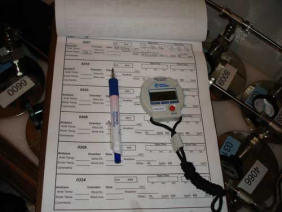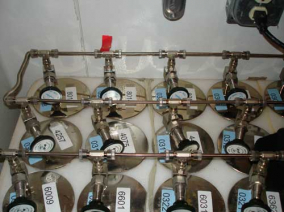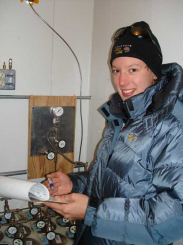Katrine Gorham, a graduate student at UC Irvine, is at Summit, Greenland for six weeks conducting air sampling from a height of 1.5 meters above the surface. She samples the air every four hours (6 times a day), filling 2L canisters. There are 24 stainless steel canisters in a box and they look like they are all ‘snaked’ together. Can you figure out how many canisters Katrine will be taking back to Irvine?


Once back in Irvine, gas chromatography will be used to analyze 70 gases that were collected. The gases are determined by using a standard concentration of the gas that will be analyzed. Then the standard is compared to the sample to determine the concentration of the gas. The seventy hydrocarbons will be plotted as ratios and concentrations over time. From this you can see seasonal trends and diurnal trends. They tend to be highest in the late winter since there is limited sunlight. With little or no sunlight, the OH production won’t happen.

The attached graph of hydrocarbon trends is from Dibb, et al., Atmospheric Environment, in press.
To check out more about Katrine and her life at Summit, visit her blog: www.Greenland-2007.blogspot.com.
| Attachment | Size |
|---|---|
| hydrocarbon_trends.doc114.5 KB | 114.5 KB |


Comments